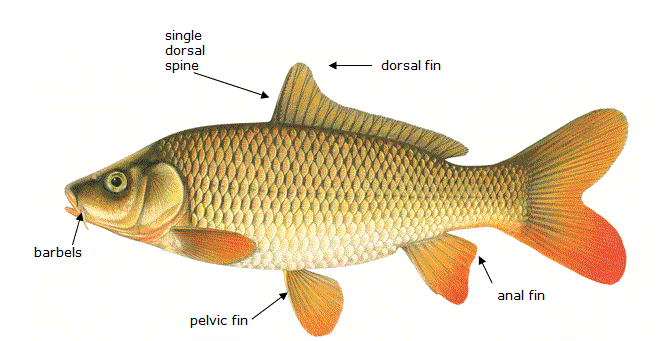Although carp have been considered a nuisance by North American anglers, they are highly prized as sportfish in Europe and can be excellent fighters. A growing number of anglers in the US are becoming interested in carp as a sportfish. What are Ideal Water Conditions for Carp?
Ideal water conditions for Carp environment include:
- Temperature: Between 18-25°C
- Dissolved Oxygen: >5 mg/L
- ph levels: 6.5-8.5
- Ammonia Concentration: <0.02 mg/L
- Nitrite: <0.5 mg/L
- Nitrate: <50 mg/L
- Clear water with ample vegetation enhances the habitat structure
- Balanced nutrient levels
Carp are the largest members of the minnow family, generally growing to about 30 inches and 10 to 15 pounds, but they can weigh up to 60 pounds. The all-tackle world record was landed in 1987 from Lac de St. Cassien, France, and weighed in at 75 pounds 11 ounces.
Introduction
Carp, members of the Cyprinidae family, are among the most widely distributed and economically important freshwater fish species globally. Renowned for their adaptability and resilience, carp thrive in a diverse range of aquatic habitats, from slow-moving rivers and lakes to ponds and even urban water bodies. Understanding the habitat requirements of carp is essential for creating environments conducive to their health and thriving populations.
Carp exhibit preferences for specific water conditions that support their physiological functions and behaviors. Key habitat requirements include factors such as water temperature, oxygen levels, pH balance, water quality, vegetation, and habitat structure. Maintaining these parameters within optimal ranges is critical for ensuring the well-being and productivity of carp populations.
In this article, we delve into the intricacies of creating ideal natural water conditions for carp. By exploring each aspect of their habitat requirements in detail, we aim to provide insights and practical guidance for aquarists, fishery managers, and enthusiasts seeking to foster healthy carp populations in various aquatic settings. From temperature regulation to disease prevention, understanding and optimizing water conditions is paramount for the successful management and conservation of carp ecosystems.
What are Ideal Water Conditions for Carp
Ideal water conditions for carp include temperatures between 18-25°C, dissolved oxygen levels above 5 mg/L, and pH levels ranging from 6.5 to 8.5. Additionally, ammonia concentrations should be kept below 0.02 mg/L, nitrite levels below 0.5 mg/L, and nitrate levels below 50 mg/L to ensure optimal health and growth. Clear water with ample vegetation and balanced nutrient levels further contribute to creating a suitable habitat for carp.
Carp are hardy and tolerant of a wide variety of conditions but generally favor large water bodies with slow-flowing or standing water and soft bottom sediments. They can be found in brackish and fresh waters and frequent shallow backwaters and shoreline habitats.
Common carp begin spawning in late April and continue into June over aquatic vegetation. Spawning areas are typically shallow, weedy bays with water depths of one to four feet. Spawning carp in shallow waters creates a lot of commotion, and can be easily observed. Several males may spawn with a single female at a time and large females release between 100,000 and up to 2,000,000 sticky eggs over the spawning period.

Ideal Water Temperature for Carp
Ideal Nutrient Levels for Carp Habitat
References:
Discover Boating- Freshwater Fishing
FAQ’s
- Dissolved oxygen: Above 5 mg/L to ensure proper respiration
Yes, dissolved oxygen levels above 5 mg/L are typically considered optimal for carp. Adequate dissolved oxygen is crucial for ensuring proper respiration, metabolism, and overall health in carp populations. Insufficient oxygen levels can lead to stress, respiratory problems, and reduced growth rates in carp.
- Ammonia: Below 0.02 mg/L to prevent toxicity.
Yes, maintaining ammonia levels below 0.02 mg/L is important to prevent toxicity in carp and other aquatic organisms. Ammonia is a toxic compound that can accumulate in water bodies due to the decomposition of organic matter and fish waste. High levels of ammonia can lead to stress, tissue damage, and even mortality in carp.

